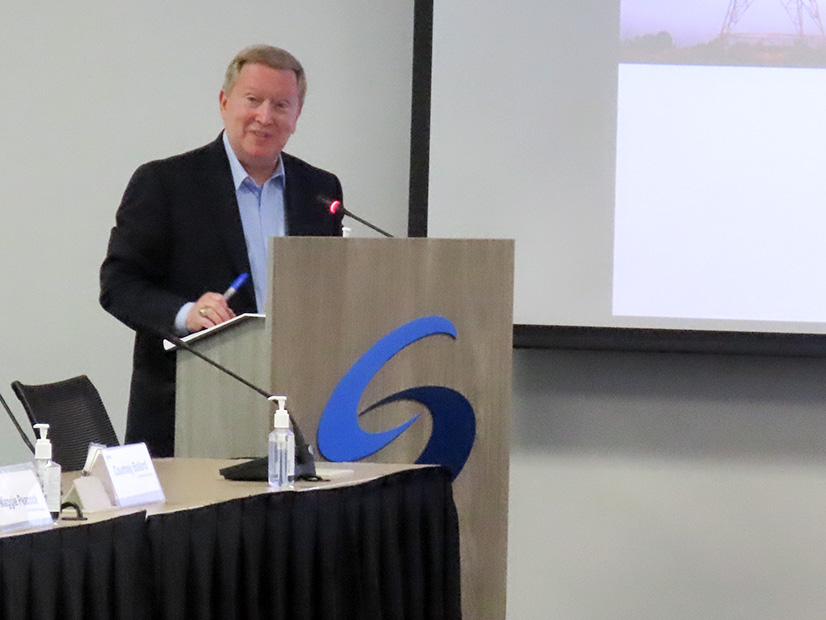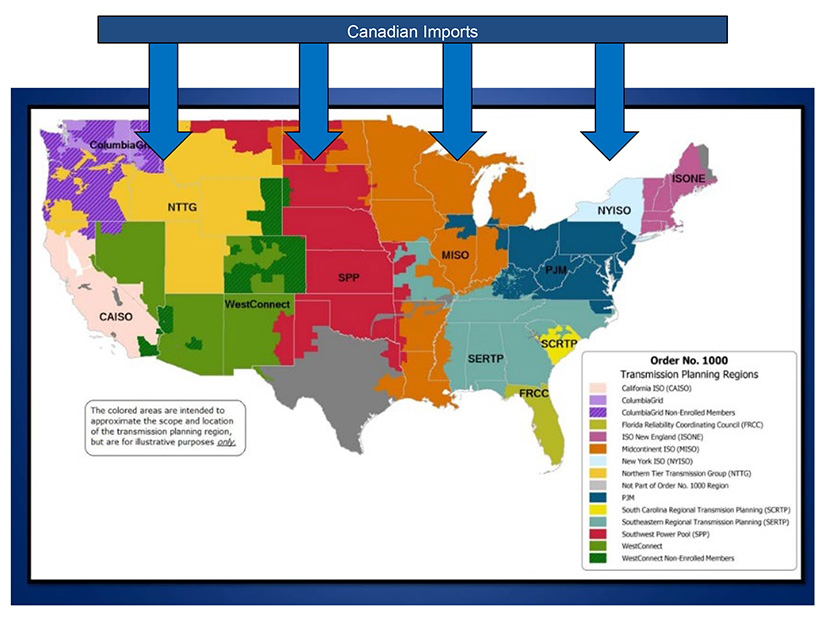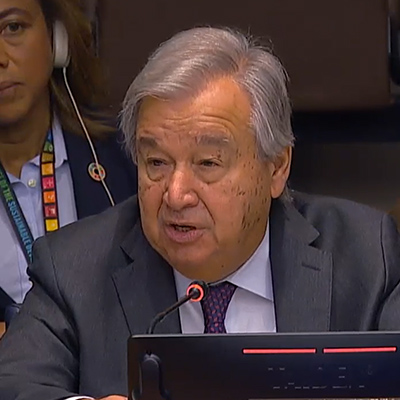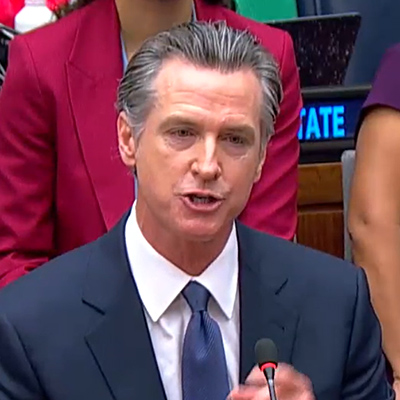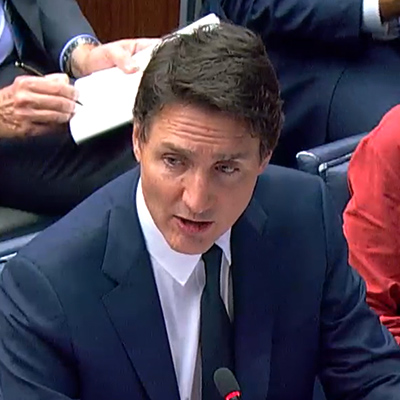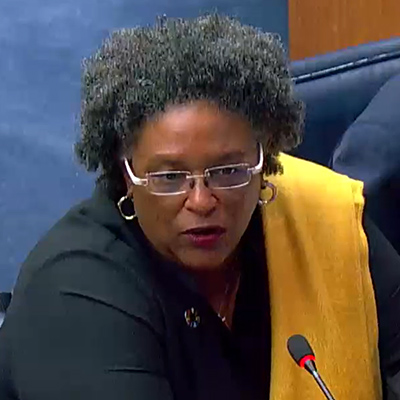FERC and NERC staff presented their initial recommendations from their joint inquiry into the widespread electric outages last Christmas, which include completing development of winterization standards and improving reliability of natural gas infrastructure.
The report includes 11 recommendations to prevent similar events, such as Winter Storm Uri in 2021, when much of Texas was without power for days and hundreds died.
“This is the fifth time in 11 years that we’ve had a winter-related weather event where we had significant generator losses,” FERC Chairman Willie Phillips said. “But this time it was unprecedented: Nearly 90,000 megawatts and nearly 80% of the generating units failed to perform at temperatures above the unit’s own documented minimum operating temperature.”
As in previous winter events, the natural gas system also suffered, with production from the Marcellus and Utica shale regions falling by as much as 54%, which led to low pipeline pressures that nearly spelled disaster for New York City at the height of winter.
“We’re talking about — if pressure does not return — going house to house to house, apartment to apartment, to relight pilots; just the act of doing this would take months,” Phillips said at his post-meeting press conference. “And this event happened in December. A little bit of winter comes through in New York in January and February. It would have been catastrophic. Everyone should be concerned enough to act on this report, and the recommendations when they come out, immediately.”
NERC CEO Jim Robb was at the press conference, and he echoed Phillip’s concerns about how much a near miss Winter Storm Elliot proved to be.
“We were fortunate in that this was a relatively short-lived cold weather event,” Robb said. “And it warmed up on Christmas Day. Had it not, ConEd certainly would have been in the soup. It was also a storm that was centered in [the] western third of the Eastern Interconnection. And if it had been a couple hundred miles further east, New England would have had real catastrophic events.”
Robb noted that it took the 2003 Blackout in the Eastern Interconnection to get Congress to approve a mandatory reliability regime. He said he hoped the prospect of millions of New Yorkers being without heat at the height of winter will produce some action on natural gas reliability.
The report calls on Congress and states to enact legislation setting up reliability rules for the natural gas systems from the wellhead through the pipeline requiring cold weather preparedness plans, freeze protection plans and operating measures for extreme cold. That legislation should set up regional natural gas communications coordinators like the reliability coordinators for the power system, and it would need to designate critical natural gas infrastructure to be protected from any load shedding that grid operators use in emergencies.
Asked to comment on its near miss, Consolidated Edison pointed to a press release it issued at 6:30 p.m. on Christmas Eve calling for emergency conservation because of problems at pipelines serving New York that it did not own.
“We asked customers to conserve; switched our electric/steam generation plants to alternative fuels and relied on LNG and CNG,” said spokesman Allan Drury. “On Christmas morning, our region’s temperatures were a bit higher than expected and gas supplies were adequate.”
The company did not respond to a request for comment on the call for gas reliability rules.
The natural gas trade groups did not want to discuss the report, which is preliminary; FERC and NERC plan to release a final report later this fall. But the Interstate Natural Gas Association of America, which represents pipelines, did throw some cold water on the idea of a mandatory reliability regime for the industry.
“A reliability organization for interstate natural gas pipelines is the wrong approach to addressing the reliability problems identified during the discussion at today’s FERC meeting,” said INGAA CEO Amy Andryszak. “FERC exercises strict oversight of interstate natural gas pipelines and has promulgated regulations governing everything from construction to reporting of operational information to rates. As a result, interstate natural gas pipelines have a strong record of delivering on their firm commitments, even in extreme weather. There is no pervasive reliability problem across interstate natural gas pipelines like the electric reliability problems that led to the creation of NERC.”
Commissioner James Danly said a big part of the problem was the lack of infrastructure — and that FERC was largely to blame. While electricity is fundamental to the economy, it is not the only customer for natural gas, and customers need to pay for service, he said.
“There seems to be this assumption that it is entirely for the purpose of driving the electric reliability that the gas system should reorganize itself,” Danly said. “And I think that even if that were the right way to go about things and the best public policy to implement, they get to have a say in how their own systems are used because we still have private property in this country, even in a regulatory regime.”
The power industry has seen a major shift since the 1990s, when just 10% of generation was natural gas and that was for peaking, said Commissioner Mark Christie. Now 50% is natural gas and the bulk of that operates as baseload, he noted.
“Recommendation number seven says study whether we need more infrastructure,” Christie said. “I think this frivolous. Of course, we do. Of course, we do. You can’t turn your whole system from gas as a discrete peaker use and then make gas combined cycles your main baseload generation and not need more infrastructure.”
Commissioner Allison Clements noted that some natural gas utilities were unable to heat customers’ homes for up to eight days, but she questioned the need to build out more pipelines in response.
“We could come in and say we need more infrastructure, but the infrastructure that was there didn’t work,” Clements said. “From the production head through generation, we saw failures. We need to focus on the part we have jurisdiction over now, and industry needs to lean in, whichever part of the industry you’re in, to cut through some of these problems.”
Both Phillips and Robb said they have been arguing in favor of a new reliability regime for natural gas, and improved coordination between the two industries, for years.
“I think the issue we have in this country is that our recognition of the relationship between the natural gas system and the electric system hasn’t caught up to the realities of how those two systems are intertwined,” Robb said.

